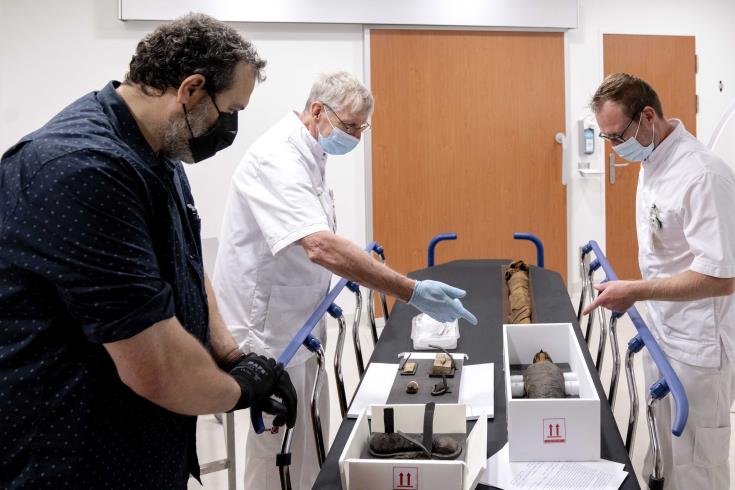Egyptian researchers have used new, digital technology to accurately see the inside of Pharaoh Amenhotep I's mummy without removing the bandages.
The digital tomographs revealed details about the appearance and the way of embalming of the king of the 18th Dynasty, who ruled Egypt around 1525-1504 BC. and was the son of the founder of the New Kingdom.
The mummy of Amenhotep or Amenophis, as its Hellenistic name was, brought rich decoration to the linen bandages and the burial mask. He was found together with mummies of other kings and queens, in a crypt in Luxor in 1881 and transported to Cairo. Because efforts were made not to damage its decoration, it was one of the few royal mummies that never unfolded in modern times, according to a study published in the scientific medical journal Frontiers in Medicine.
In 2019, Egyptologist Zahi Hawass and Cairo University professor Sahar Salim used a CT scanner to digitally "unroll" the mummy before moving it to its new home, the National Museum of Egyptian Culture in Cairo.
The results of their study were made public yesterday. They show that Amenhotep's face resembled that of his father. He is estimated to have died at the age of about 35, but the cause of death was not clear, according to the Antiquities Ministry. He seems to have been the first pharaoh to be mummified with his arms crossed on his body and his brain had not been removed, unlike the other pharaohs of the New Kingdom.
The tomographs also revealed 30 amulets or jewels buried with him, such as a belt with 34 gold beads, which shows that the priests of the 21st Dynasty, who later rewound the mummy, took care to preserve her jewels. In this "second burial", the priests of Thebes restored the head of Amenhotep and repaired some post-mortem wounds that were probably caused by gravediggers.
